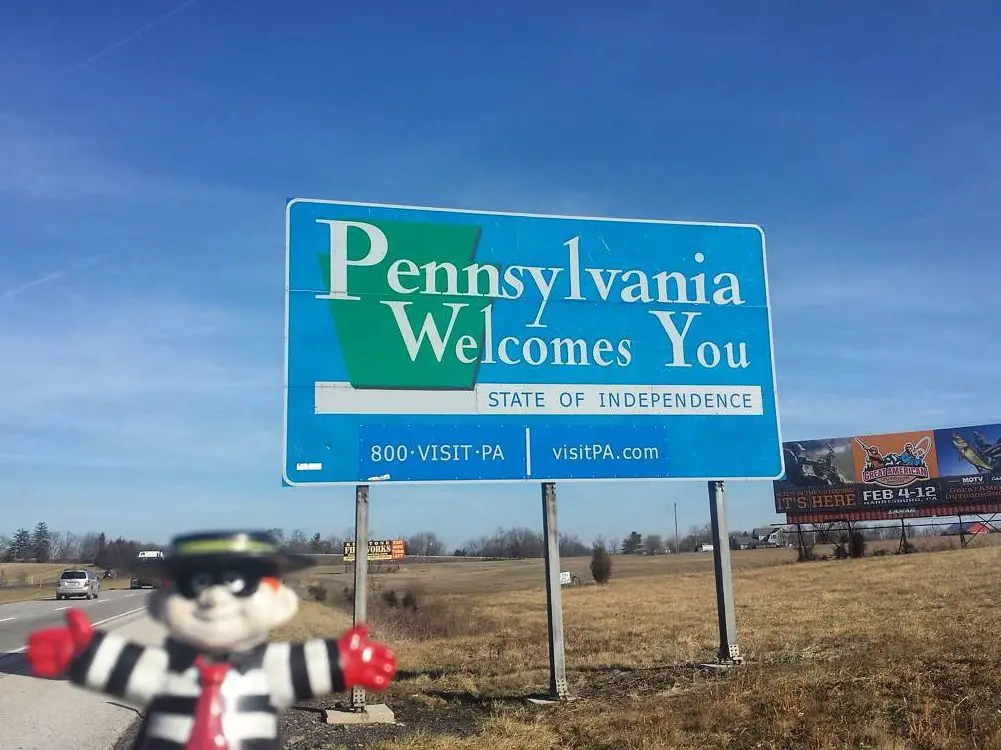Let’s face it, America has some weird laws: North Carolina bingo games cannot last more than five hours, and Coloradans need a permit to modify the weather. Such bizarre legal codes are rarely enforced — but state alcohol laws, even if just as outlandish, are not to be reckoned with.
The 1933 Prohibition repeal came with greater state autonomy in creating, regulating and enforcing alcohol laws. Historical precedence and religious demographics influenced just how strict or fluid states were in implementing their respective laws, despite how absurd they might be.
Pennsylvania and Maryland share a border and have a complicated territorial history. Prior to the drawing of the Mason-Dixon line in the 1760s, the two states essentially shared (and fought an 8-year war over) Pennsylvania’s southern and Maryland’s northern border.
Previously sharing territory and currently sharing a border, one might assume that Pennsylvania and Maryland share similar laws. This would also be convenient, as residents along the border cross state lines daily for work and recreation. But, alas, legal codes are not always so simple nor practical, especially when it comes to alcohol laws.
The Commonwealth of Pennsylvania came to be in 1681 as a “holy experiment” of Quaker founder William Penn, who guaranteed religious freedom to all residents. Such promises appealed to Penn’s fellow Quakers and, later, German-speaking immigrants, known today as the Pennsylvania Dutch (including Mennonites, Amish and Brethren).
The Keystone State’s religious tolerance means many of its legislative traditions are heavily influenced by remnants of old Christian morals. As recently as August 2017, 686 municipalities in Pennsylvania continued the Prohibition’s work by remaining “dry” communities.
As a dedicated teetotaler, or one who abstains from alcohol, Pennsylvanian Governor Gifford Pinchot was devastated at the national Prohibition repeal, and he was determined to protect his beloved state. If America wanted to descend into drunkenness, so be it, but the state of “virtue, liberty and independence” would not be so dammed.
Pinchot called a special session of the General Assembly and formed the Pennsylvanian Liquor Control Board to create liquor laws that would make drinking alcohol as “inconvenient and expensive as possible.”
Mission accomplished: Pennsylvania has some of the strictest alcohol laws in the United States. The rigmarole of buying an alcoholic beverage is so exhausting that even Dionysus would choose water over wine.
Like most states, Pennsylvania sets the legal drinking age at 21 years and allows 18-year-olds to sell alcohol. But a 17-year-old can also sell alcohol if they have graduated high school or have a note from the head of their school district certifying they’ve reached full “academic potential.”
Pennsylvania law, taking no chances on potential underage drinking, does not make exceptions for religious ceremonies; no wine at communion, no wine at Passover — no alcohol for minors, ever. William Penn’s spirit is likely dismayed at this aspect of his “holy experiment.”
Far more inconvenient than rigid age limitations on alcohol consumption is the very purchasing of it — alcohol runs are long and toilsome endeavors.
Beer is only available from designated distributors and nothing smaller than a full case, or 24-pack, can be sold, unless a customer finds a bar with a license to sell 6-packs. Wine and hard liquor, meanwhile, are only sold at the state-run store at the state-determined price. And with only 600 “Fine Wine and Good Spirits” stores in the 46,055 square mile state, buying that perfect bottle of Jameson or Pinot Grigio might mean a lengthy road trip.
Pennsylvania clearly has strict liquor laws, but are they enforced? Just ask Arthur Goldman. In 2014, a judge found out that Goldman brought wine illegally into the state and, in turn, ordered the contents of 1,300 bottles to be poured down the drain.
Until recently, Pennsylvania and Utah were the only states where the state government had complete control over wine and spirit sales. But luckily for Pennsylvanians, 2016 brought minor changes to liquor laws that suggest the state “might be on the brink of recovering from an 83-year hangover.”
If waiting for that hangover cure becomes wearisome, just hop over the Mason-Dixon. The Old-Line State has always welcomed drinkers, even during the Prohibition. Maryland was the only state that never passed a state enforcement act, as the Prohibition was seen as “an infringement on states’ rights to enforce and control liquor traffic within its borders.”
These declarations, however, were largely symbolic because the entire country was legally a dry nation. Subsequent liquor laws tried to keep the symbolism alive by stating that the purpose of state policy toward alcohol regulation is to “obtain respect and obedience to law and to foster and promote temperance.” Where Pinchot wanted Pennsylvania law to completely discourage all drinking, Maryland law wants to moderate excessive drinking.
To accomplish this goal, the state relinquished most of its authority to local counties. County boards and councils regulate liquor licenses, control which business can sell specific types of alcohol and determine when these products can be sold.
Maryland’s legal drinking age is also 21, and 18-year-olds can serve or sell beer and wine, but servers and sellers of hard liquor must be 21 because, according to an old myth, spirits are more alcoholic than beer or wine.
Minors who wish to indulge in fermented beverages are free to, so long as they drink in a private residence and a guardian or spouse is present. If they are at church, temple or another public religious establishment, however, it’s illegal. Like Pennsylvanian, Maryland law makes no exception to minors drinking at religious ceremonies — but they can get as intoxicated as they want in their own homes. This, ladies and gentlemen, is the logic of Maryland alcohol laws.
As of 2018, Maryland was one of 11 states that did not allow beer and wine to be sold at grocery stores. However, opening alcohol sales to grocery stores would economically benefit both local brewers and struggling family-owned grocers, so some counties are exploring the possibility.
Maryland and Pennsylvania once debated for nearly 50 years about an imaginary line in the ground, when really a battle over “to drink or not to drink” would have been far more interesting. A wet state borders a dry one — borders should foster similarity, and conflicting ideas of temperance should foster differences.
Although legal and religious history plays a clear role in influencing each state’s respective liquor laws, nothing in their laws is radically different enough to create another neighborly dispute.
That is, unless, another Arthur Goldman comes along. Except instead of importing wine from abroad, he just pops over to Maryland, stocks up on spirits and heads home to Pennsylvania. The penalty would far surpass emptying some wine bottles — the states might need a new, stricter re-surveying of the Mason-Dixon line.
















